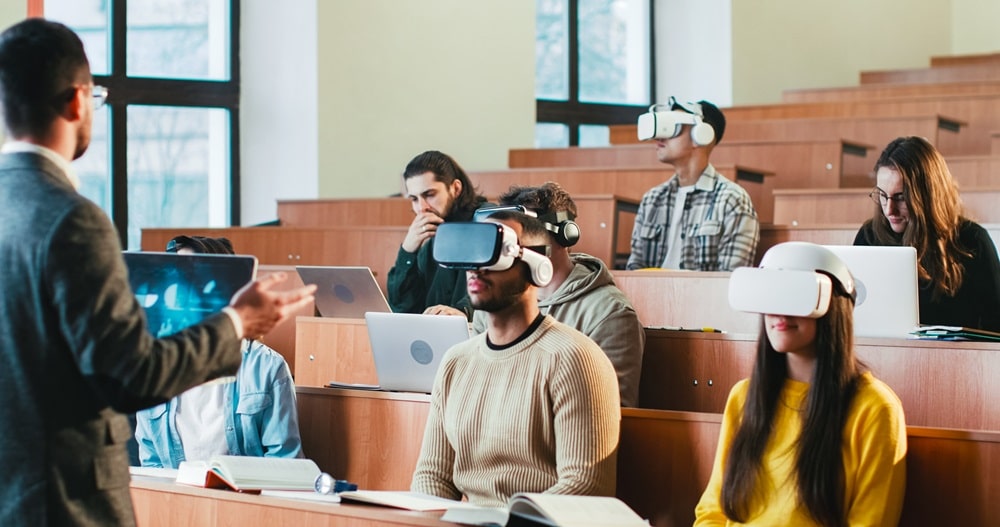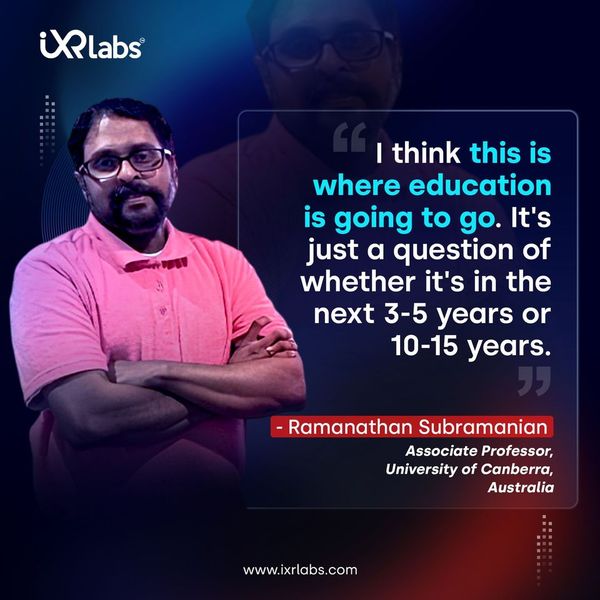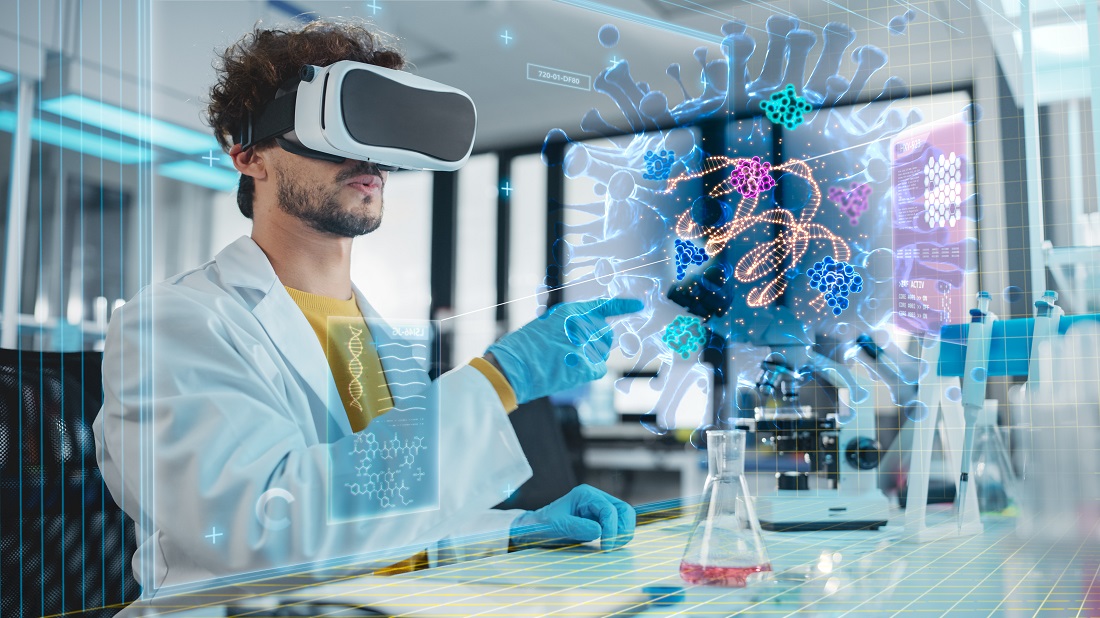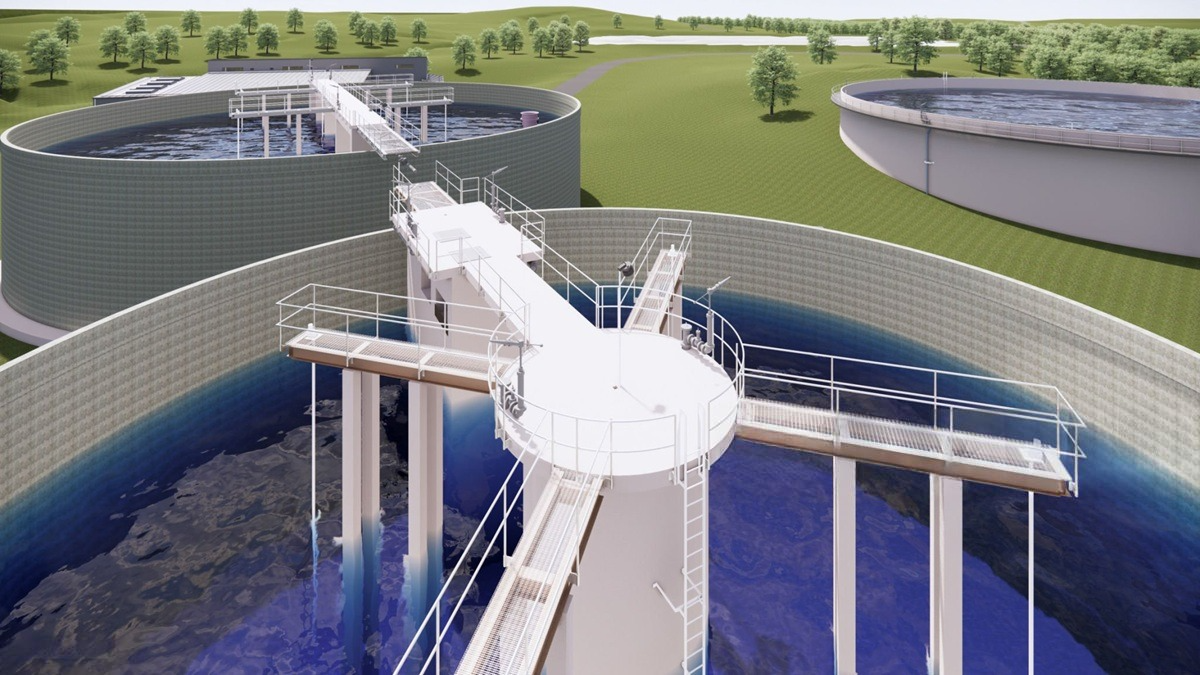10 Amazing Uses of Virtual Reality in the Classroom

In today’s era, one of the first thing people think about at the mention of Virtual Reality (VR), is violent video games! However, VR only begins at the entertainment sector! VR has countless advantages that we, humans, are yet to discover.
The reality behind this novel and exciting computer technology is that, it meets more than just an eye. We have only scratched the surface when it comes to knowledge about VR and an even smaller fraction is known by the general public!
What we do know, however, is that VR is not simply a new hot technology that will spoil your kids and make them violent by introducing them to violent video games. VR can help in the education of your child and many other children out there.
It is true! virtual reality in the classroom has benefits in almost every discipline and is a unique and essential addition to classrooms. Uses of VR in higher education are plenty to begin with but VR technologists are in the middle of developing more uses for it in the classroom every day.
Keep reading VR uses and benefits in classroom if you are having a hard time believing in the modern techno-magic, VR!
1. VR Gamification
Before parents get too worried and students, too excited, virtual reality in the classroom gamification does not equal video games. But seeing how well VR has supported the process of gamification in the entertainment industry, utilizing this process and applying it to the classroom is an innovative combination.
Learning by playing games is fun which makes learning engaging. This is a method of teaching and learning that most traditional classrooms do not partake in. However, it is certainly effective for classrooms throughout preschool to high school!
2. VR Trips
_90481.png)
Teaching is very effective when children can visualize what environment theories took place in. For example, if children want to learn about Greek columns, then Greece can be just one VR headset away! Parents would not have to give consent or worry about their children’s safety, while students could learn in a different country each day.
3. Immersive and Experiential Learning
The above VR trip, is an example of how immersive VR technology and how students get to experience varied communities and historic monuments while sitting in class! However, the perk of such a type of learning is that.
It enhances learning and increases memory retention for students. Students can also experience different cultures which allows them to have world views and be more informed.
 Get the App from Meta Store: Download Now
Get the App from Meta Store: Download Now
4. Educational Real-Life Television
Would it not be a miracle to imagine yourself working alongside renown radium inventor, Marie Curie? VR can make such a simulation possible! Uses of virtual reality in the classroom include being able to select a monumental moment in history and experience it instead of reading about it off the internet or listening to a lecture about it.
Students could have the opportunity to watch Winston Churchill’s famous “Blood, toil, tears and sweat” speech or join Gandhi on his Dandi march!
5. Enhancing Skills
We’ve heard “Practice makes a man perfect” a million times and know that actually doing something is the best way of learning. VR application examples are innumerable but all of them require students to “do” instead of simply read or listen.
Google conducted a study, that showed how learning a skill through VR based learning, had comparatively promising results, when compared to learning a skill through videos.
6. Soft Skills
Soft skills come naturally to many people. However, there are many who struggle with these skills. VR education application examples include apps that improve soft skills! Virtual Speech is such an application that helps students prepare for presentations, speeches, and interviews by grading their performance.
7. STEM Education
All the four disciplines Science, medical, Engineering and Mathematics are built of complex abstract concepts, that take a lot of resilience on a students’ part to understand.
These concepts can be made somewhat tangible by using VR in the education. Students can, not only, watch abstract concepts transform into somewhat tangible substance but they can also interact with these concepts!
"Step Into the Future of Education: Discover In-Depth How Virtual Reality is Revolutionizing Classroom Learning with These Game-Changing Applications!"
8. Laboratories
It is not easy to maintain updated laboratories and have enough equipment to cater to all the students in a class. The difficulty does not solely lie in procuring the resources but in financing them as well.
However, with VR based laboratories like Labster and PraxiLabs, not only does the cost go down, but the process is safe and accessible to all, through a simple VR headset!
9. VR in the Classroom for Medical and Engineering Students
Uses of VR in education is seen in disciplines like medicine and engineering, especially for higher education. Along with the aforementioned availabilities of laboratories, there are VR based applications that primarily focus on skills enhancement and learning for these disciplines.
One such application namely 3D Organon aspires to transform medical education though its enhanced VR technology. The application allows students to view the human anatomy closely and even participate in anatomy-based video games that helps develop practical skills.
Similarly, engineering students can design and develop products virtually first and can simulate its functioning before making a product physically. Making a virtual version and checking its functionality in a VR simulation first can allow students to figure out if there are any errors and edit until a completely functional design has been formed.
10. Remote Learning
From traditional physical classes, we have shifted to online classes. By availing VR technology, educational facilities will have the opportunity to be at everyone’s house. Learning can be more flexible and can be accessed from anywhere.

Virtual reality in the classroom for higher education is truly a one-of-a-kind technology that has never been seen before and might be the closest thing to magic for us! Its applications are countless and there are unimaginable ways in which we can use this technology to our advantage.
However, introducing them to classrooms is the first way to begin exploring their uses!


.png)
.png)


.png)